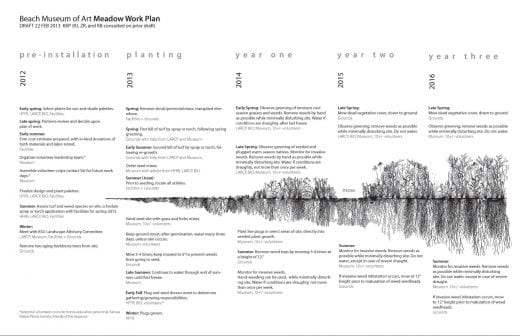The benefits of creating an urban native plants meadow are many: habitat and forage for pollinators, increased stormwater infiltration of runoff on a site, increased plant bio-diversity, potential for informal learning about eco-systems….These are just a few of many reasons.
Related to establishing community meadows, Katie Kingery-Page recently gave a keynote address to the Kansas Native Plants Society, “Ten Lessons for Urban Native Plants Meadows.” See a summary of this talk on the Dyck Arboretum of the Plains blog.
The Meadow blog’s mission is to be a living archive about the Meadow and a helpful resource for those interested in community-based native plants meadows. We’ve been digging through our archives from the very start of Meadow planning and selected this Plan of Work document to share. It was an evolving document and later changed to reflect roles of the Meadow partners. For example, faculty in K-State’s Department of Landscape Architecture and Regional & Community Planning, along with Beach Museum staff, have led Meadow maintenance with the help of so many terrific volunteers.
If your community is planning a meadow, we recommend having a clear document assigning roles and outlining the work needed to build a slow landscape.[1] Below is our example.
[1] For more on slow landscapes, see Elizabeth K. Meyer’s article “Slow Landscape: A New Erotics of Sustainability” in Issue 31 (2009) of Harvard Design Magazine.
